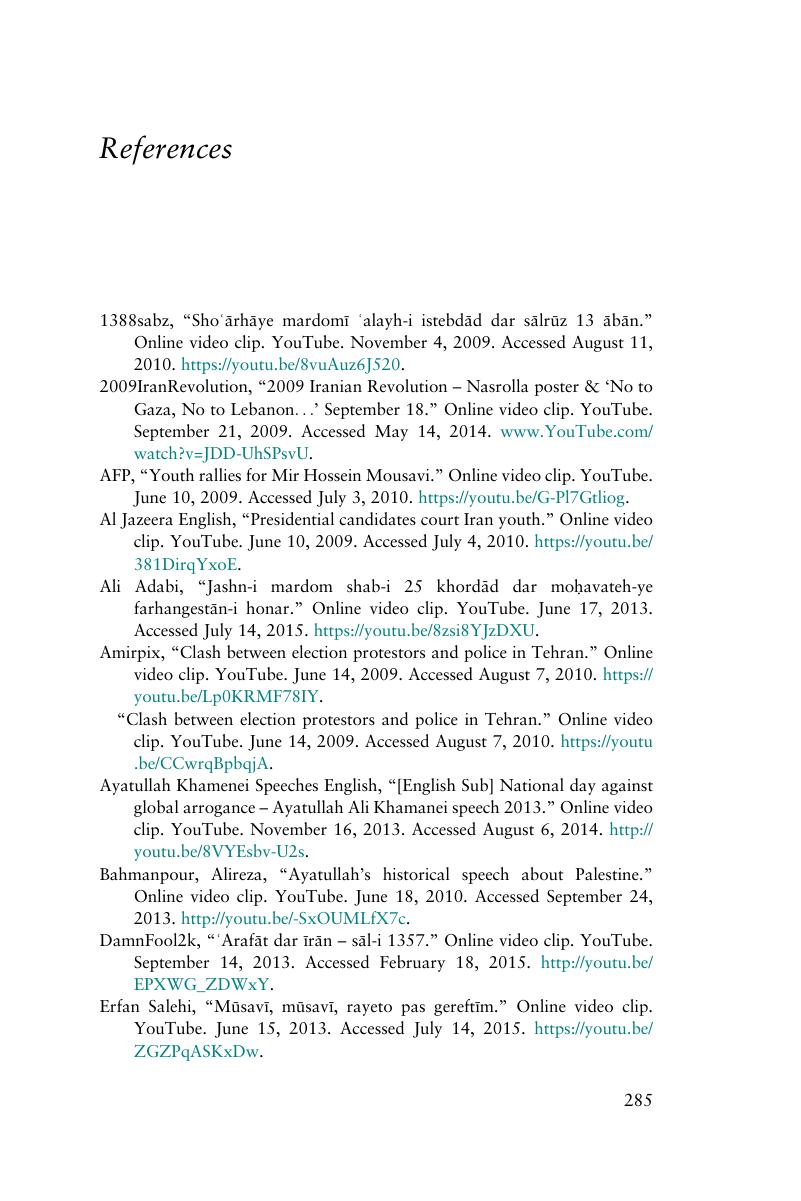Book contents
- Contesting the Iranian Revolution
- Contesting the Iranian Revolution
- Copyright page
- Dedication
- Contents
- Figures
- Preface
- Acknowledgments
- Note on Transliteration
- 1 Situating the 2009 Green Uprising
- 2 From the Theory of Islamic Republicanism to Practice, 1979–2009
- 3 On the Streets and Beyond
- 4 Contesting Palestine
- 5 Mourning as Protest
- 6 Conclusion
- References
- Index
- References
References
Published online by Cambridge University Press: 20 February 2020
- Contesting the Iranian Revolution
- Contesting the Iranian Revolution
- Copyright page
- Dedication
- Contents
- Figures
- Preface
- Acknowledgments
- Note on Transliteration
- 1 Situating the 2009 Green Uprising
- 2 From the Theory of Islamic Republicanism to Practice, 1979–2009
- 3 On the Streets and Beyond
- 4 Contesting Palestine
- 5 Mourning as Protest
- 6 Conclusion
- References
- Index
- References
Summary

- Type
- Chapter
- Information
- Contesting the Iranian RevolutionThe Green Uprisings, pp. 285 - 309Publisher: Cambridge University PressPrint publication year: 2020



